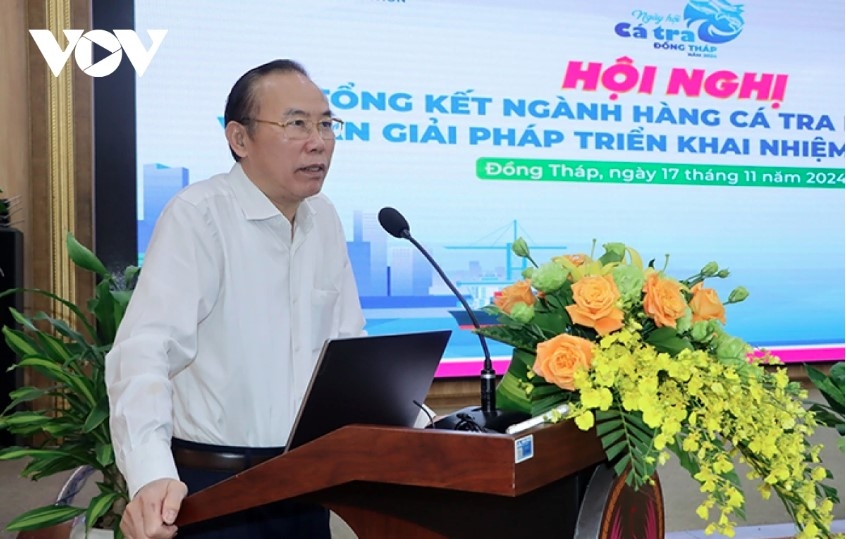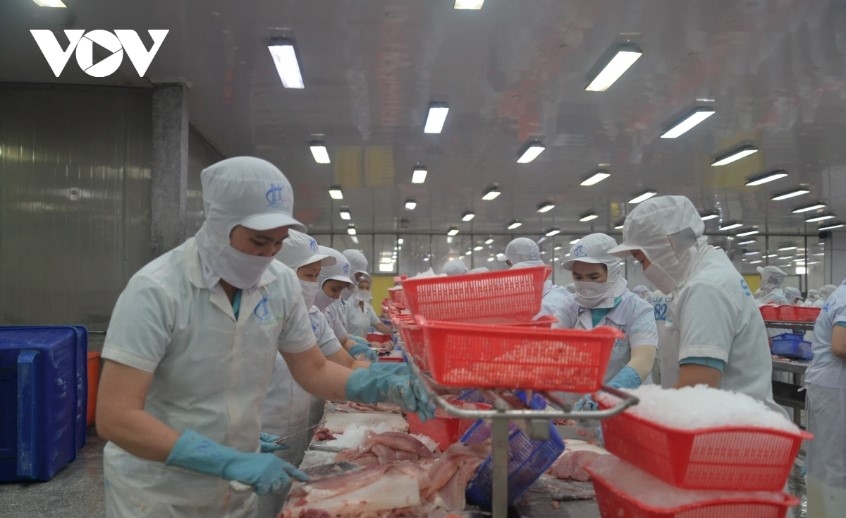
Information regarding these figures was released at a workshop reviewing the pangasius industry’s activities this year and discussing solutions to perform tasks ahead in 2025, with the event being recently held in Cao Lanh city in the Mekong Delta province of Dong Thap.
Nguyen Phuoc Thien, vice chairman of the Dong Thap People's Committee, said that this year the local commercial pangasius farming area had reached 2,630 hectares, with an estimated output of 540,000 tonnes, marking an increase of 15,000 tonnes compared to 2023. The production value of the pangasius industry continued to increase, with the figure estimated to reach more than VND8,800 billion, accounting for over 17% of the total production value of the agro- forestry - fishery sector of Dong Thap.
According to details provided by the Directorate of Fisheries under the Ministry of Agriculture and Rural Development, the output of pangasius this year is estimated to be at 1.67 million tonnes, equal to 99% compared to the same period from 2023.
As of mid-October, the export turnover had reached US$1.56 billion, up 8.9% on-year. However, the growth rate was uneven due to fierce competition from other countries.
The Directorate of Fisheries also believes that the value-added pangasius products still account for a small proportion, mainly frozen products.
The dependence on a few large export markets therefore puts the pangasius industry at a disadvantage if these markets change their policies or implement stricter requirements on quality and food safety.
Furthermore, the lack of co-ordination and excessive competition among Vietnamese processors and exporters, along with uneven quality, have duly affected the reputation and brand of Vietnamese pangasius products.
According to the Directorate of Fisheries, the purchase price of raw pangasius has impacted the production efficiency of hatchery and commercial farming facilities, especially small-scale facilities.
However, with constant efforts being made by enterprises, support from relevant management agencies and associations, the Vietnamese pangasius industry has produced remarkable results in terms of both quality and value.
In the development orientation of pangasius in 2025, the Directorate of Fisheries stated that the output of farmed pangasius is likely to hit 1.65 million tonnes, with the export turnover value of US$2 billion.
In a bid to achieve this goal, localities need to invest in and upgrade their infrastructure; build production, processing, and consumption chains to ensure stable output; as well as expand farming areas according to standards to create high-quality products, ensure food safety, and meet the needs and requirements of the consumption market.
In addition, it can be viewed as essential to apply new farming technology, save water, adapt to climate change, and make use of wastewater and sludge treatment technology to protect the environment.
According to the forecast made by the UN Food and Agriculture Organization (FAO), by 2030 the world's consumption of seafood for food is expected to increase by 18%, equivalent to 28 million tonnes compared to 2018. Of which, the Asian market will consume the most, accounting for about 71% with about 183 million tonnes of seafood, while Latin America will consume the least.
Aquaculture will continue to meet demand and consumption thanks to the shift of some species from wild to farmed. Consumers in developed countries are also willing to pay greater attention to products with sustainable development labels and health and nutritional requirements. This is therefore an issue that seafood businesses need to invest in to better reach consumers.



